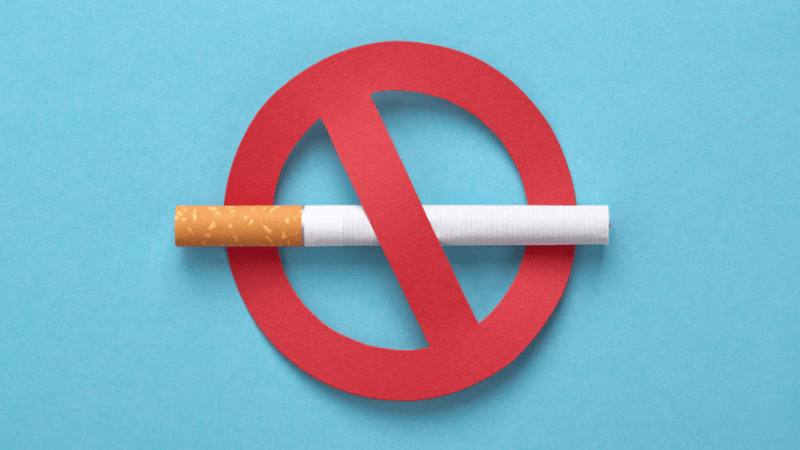Imagine walking into a home where the air feels fresh and clean, where you can take a deep breath without worrying about inhaling harmful particles. Now, picture the opposite: a space filled with the lingering odor of smoke or a synthetic chemical from a vape, where every breath brings a mix of toxins into your lungs. The difference between these two scenarios highlights the importance of maintaining a smoke-free, vape-free residence. Ensuring that your living space is free from toxins is crucial for your health, comfort and overall indoor air quality.
The Importance of a Smoke-Free, Vape-Free Home
A smoke-free, Vape-Free home is not just a luxury; it’s a necessity for a healthy living environment. Smoking indoors can have severe repercussions on indoor air quality and the health of everyone residing in or visiting the space. Here’s why prioritizing a smoke-free home is essential:
- Tobacco smoke contains over 7,000 chemicals, many of which are toxic and at least 70 that can cause cancer. Even secondhand smoke, which is the smoke exhaled by smokers or emitted from burning tobacco products, can pose serious health risks. These risks include respiratory infections, asthma, heart disease, and lung cancer. Children, pregnant women, the elderly, and individuals with pre-existing health conditions are particularly vulnerable to the harmful effects of secondhand smoke.
- Marijuana smoke, even though it now used for medicinal purposes, can contain some of the same harmful chemicals found in tobacco smoke, including tar, carbon monoxide and carcinogens. It can also irritate the lungs and airways.
- Vaping involves the inhalation of chemicals, many of which can have harmful effects on health. The primary components of e-liquids used in vaping devices, as well as some of the byproducts created when these liquids are heated, include a variety of chemicals. Here’s an overview of some key chemicals found in vaping: Nicotine, Propylene Glycol and Vegetable Glycerin, Flavorings of Synthetic Chemicals, Formaldehyde, Acrolein, Heavy Metals, Volatile Organic Compounds, Carbonyl Compounds and Benzene.
Improved Air Quality
Indoor smoking significantly deteriorates air quality. The pollutants from tobacco smoke can linger in the air for hours, even after the visible smoke has dissipated. Smoke can stick to the walls and other surfaces in your home. When smoke, whether from cigarettes, cigars, vaping or even cooking is released into the air, it contains a mixture of particles, tar, nicotine and various chemicals. Over time, these particles settle on surfaces, creating a residue known as “thirdhand smoke” in the case of tobacco products. These particles can continuously contaminate the air. A smoke-free home ensures that the air remains clean and free from these persistent pollutants.
Steps to Maintain a Smoke-Free Residence
Creating and maintaining a smoke-free residence involves a combination of policies, habits and tools. Here’s a comprehensive guide to help you achieve this:
Establish a No-Smoking Policy
The first step is to establish a clear no-smoking policy for your home. This would also include not just tobacco smoke but any kind of smoke including marijuana and vaping. Communicate this policy to all household members and visitors. Make sure everyone understands that smoking indoors is not permitted under any circumstances. If you have outdoor spaces, designate specific smoking areas away from windows, doors and common gathering grounds.
Educate Household Members
Educate everyone in the household about the dangers of secondhand smoke and the benefits of a smoke-free home. Understanding the health risks can motivate smokers to respect the no-smoking policy and even consider quitting.
Support for Smokers
If you or any household members are smokers, consider providing support to help them quit. Numerous resources, such as nicotine replacement therapies, counseling and support groups are available to assist with smoking cessation. Not only will this improve indoor air quality, but it will also benefit the smoker’s health.
Use Air Purifiers
Invest in high-quality air purifiers with HEPA filters to help remove any residual smoke particles from the air. While air purifiers cannot completely eliminate the risks associated with secondhand smoke, they can significantly improve indoor air quality by reducing airborne pollutants.
Regular Cleaning
Tobacco smoke and vaping particles can cling to surfaces and fabrics, creating thirdhand smoke, which continues to release harmful chemicals into the air. Regular cleaning of walls, floors, furniture, and curtains can help reduce this contamination. Use a vacuum with a HEPA filter to clean carpets and upholstery.
Benefits of a Smoke-Free Home
Maintaining a smoke-free home offers numerous benefits that go beyond health improvements. Here are some additional advantages:
Enhanced Comfort
A home free from smoke smells fresher and more inviting. Guests and household members can enjoy the space without the discomfort of inhaling smoke or dealing with its lingering odor.
Preservation of Property
Smoking indoors can cause significant damage to property. Smoke leaves behind stains on walls, ceilings and furniture, and its odor can seep into fabrics and carpets. A smoke-free home helps preserve the aesthetic and structural integrity of your living space, potentially increasing its value.
Better for Pets
Pets are also susceptible to the harmful effects of secondhand smoke. They can develop respiratory issues, allergies and even cancer from exposure to tobacco smoke. A smoke-free home ensures a healthier environment for your furry friends.
Challenges and Solutions
Transitioning to a smoke-free home can come with challenges, especially if there are smokers in the household. Here are some common challenges and practical solutions:
Resistance from Smokers
Some smokers might resist the change, feeling that their personal freedom is being restricted. Address this by emphasizing the health benefits for everyone, including the smoker and offering support for smoking cessation.
Relapse
Even with the best intentions, smokers may relapse and smoke indoors. If this happens, remind them of the no-smoking policy and provide additional support to help them quit. Ensure regular cleaning and use of air purifiers to mitigate the effects of any slip-ups. Prioritizing a smoke-free residence is a crucial step towards ensuring clean indoor air quality and safeguarding the health of everyone in the home. By establishing a no-smoking policy, educating household members or tenants, providing support for smokers and using air purifiers, you can create a healthier, more comfortable living environment. Remember, a smoke-free home not only benefits the residents but also preserves the property and enhances the overall quality of life. Take the necessary steps today to breathe easier and live healthier in a smoke-free oasis.

